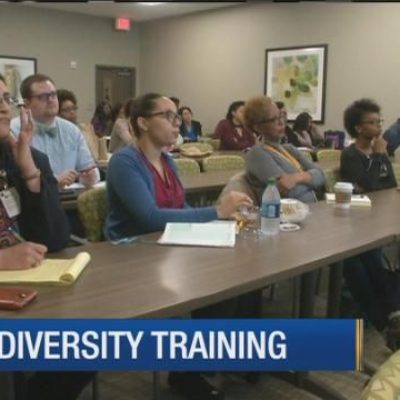Hearing Looks at On-the-Job Training to Bridge Skills Gap
More than 6 million jobs are going unfilled in the U.S. as employers struggle to find applicants who can do the work. Forty-six percent of U.S. employers say they can’t find workers with the skills they need, according to a recent Manpower survey.
A congressional subcommittee hearing Wednesday examined how the 2014 Workforce Innovation and Opportunity Act (WIOA) supports work-based learning—including apprenticeships—to bridge what has been called the most acute talent shortage since 2006.
During the hearing, “On-the-Job: Rebuilding the Workforce Through Apprenticeships,”committee members quizzed workforce experts on their experiences with the WIOA, apprenticeships and other employer-based, on-the-job learning programs.
Wisconsin has a 2.9 percent unemployment rate. While that is great news for the state, it poses a challenge for companies trying to fill positions, said B.J. Dernbach, assistant deputy secretary at the state’s Department of Workforce Development. He was among experts appearing before the subcommittee.
“It is imperative we find enough qualified workers to meet the needs of our employers,” he said.
The state’s registered apprenticeship program, he said, is “one of the most effective tools in our toolbox to help get people into careers and get them a lifelong credential.” The program has nearly 11,000 registered apprentices with 2,500 employers such as Footlocker and the Frank Lloyd Wright organic farmstead.
Someone completing an apprenticeship program in Wisconsin earns an annual median salary of $71,624, according to Dernbach. Two years after completing training, 98 percent of workers who completed the program were still employed in the same occupation, and 94 percent remained in Wisconsin, he told committee members.
One strategy the state uses to entice employers to use apprentices is to offer a discount on worker’s compensation premiums if the employer hires through the state’s Bureau of Apprenticeship Standards, Dernbach noted in formal testimony. Wisconsin also targets other populations, such as veterans transitioning into the private sector, and partners with the Department of Corrections to offer inmates an opportunity to earn credentials for computer numerical control coursework.
A two-week, intensive boot camp through the Shenandoah Valley Workforce Development Board (SVWDB) in Virginia has been successful in getting recent high-school graduates into the pipeline for manufacturing production jobs, said Sharon Johnson, the board’s chief executive officer.
The aim of the preapprenticeship model is to increase the availability of production operators and improve the retention of those new employees, she said. Employers have hired eight participants from the pilot program who then registered for the industrial-manufacturing technician apprenticeship program.
The SVWDB also supports a preapprenticeship model in manufacturing for people with disabilities. The Hershey Co. has placed 53 of those apprentices in industrial-manufacturing technician jobs.
Employers looking to build a pipeline of potential employees with the skills they need must start early—reaching students before high school—in promoting on-the-job training opportunities, many of the experts told committee members. Wisconsin established a pilot program to expand youth apprenticeships for students in middle school through grade 10. Youth apprenticeships allow students to earn credits toward registered apprentice programs. Sometimes credits in those programs earned in high school also can be applied to a college degree.
But students have to be informed about opportunities for in-demand, good-paying jobs and how to prepare for them, Dernbach said.
One way to do that is by educating high-school guidance counselors and breaking down the perception that apprenticeships are for jobs that are “dumb, dirty and dangerous,” he said.
The Hartford, the Connecticut-based property and casualty insurance firm, for example, plans to bring 200 apprentices on board by 2020. And Dernbach pointed to the information technology help-desk apprenticeship program at Footlocker.com/Eastbay headquarters in Wausau, Wis., as an example of how apprenticeship programs have extended into other industries.
The Wisconsin workforce board gives labor market information to guidance counselors on the hot jobs in a given area, Dernbach said.
“We can pull up a heat map on Wisconsin’s economy” and show them “these are the wages, these are the jobs and here’s the pipeline on how [students can] get there,” he said.
However, the same solution for finding qualified job candidates does not fit every business or every job a business has, Johnson said. It’s important for employers to customize their approach.
Businesses can connect with potential trainees who are still in school by offering industry tours, mentoring and going into the classroom to talk about their industries, available occupations and how to train for those jobs.
Youth who are out of school and working—and others who are unemployed or underemployed—must be reached differently. A best practice, Johnson noted, is for employers to partner with organizations with a history of working with that population. She also advised employers to go out into their communities.
“If you meet [potential trainees] at the McDonald’s or at Walmart or the library or the church,” she said, “you have a better opportunity” to reach them.
[Read more at the Society for Human Resource Management]


